Enoura Observatory
Embedded In Nature: A Hilltop Art Facility By Japanese Artist Hiroshi Sugimoto

The highly-anticipated permanent space of famed artist Hiroshi Sugimoto’s Odawara Art Foundation has finally found a site to call home. After ten years in the making, artist Hiroshi Sugimoto’s new Odawara Art Foundation acts as a diverse art facility consisting of a gallery space, performance stages and tea house. Situated on a hilltop slope in the local area of Nebukawa in Odawara in Japan’s Kanagawa Prefecture, the Enoura Observatory sits amongst the area’s local citrus groves and mandarin farms facing the expansive Sagami Bay.
Known as one of Japan’s most famed artists, Hiroshi Sugimoto’s works extend to sculpture, installation, and architecture in an ongoing partnership with architect Tomoyuki Sakakida of New Material Research Laboratory, seeing their previous designs together include the Izu Photo Museum in Shizuoka and MOA (Museum of Art) in Atami, Japan.
Here, their design for the Enoura Observatory sees the use of technical glass and unpolished Oya stone imbed with historical fossils, sourced from the Tochigi prefecture. The same textured stone known for its porous properties used for the Frank Lloyd Wright-designed Imperial Hotel in Tokyo.


Walking around the expansive site, each space is interconnected with the play of light and shadows. Sugimoto designed the same to respond to the natural movement of the sun, with the Summer Solstice Observation Gallery and the 70-metre Winter Solstice Observation Tunnel framing and illuminating the sunrise and sunset from Sagami Bay.
The outdoor performance stage was created using technical optical glass, the same type of glass used for camera lenses aimed to reflect the various light refractions on the stage’s cut surfaces. On a bright day, the stage can be naturally illuminated by the sun. Here, Bunraku and other traditional Japanese theatre performances can be enjoyed whilst facing the spectacular ocean views from the “floating” glass stage and deck supported by hinoki wood and a kakezukuri framework (a traditional frame most commonly seen at traditional temples such as Kiyomizu-dera temple in Kyoto and the Monjudo hall on Mount Mitoku in Tottori).
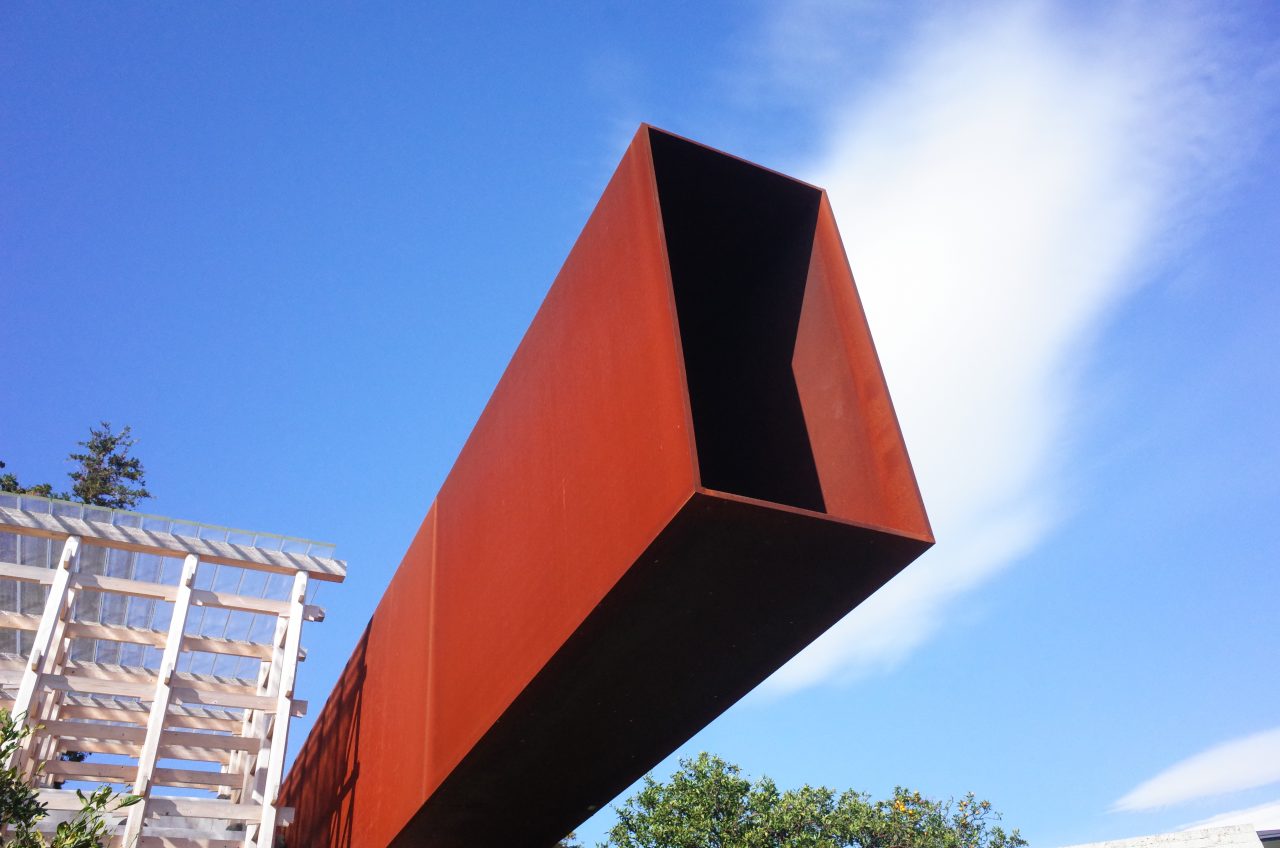
In the Summer Solstice Observatory Gallery, the space is designed as a gallery and observation deck with seven of Sugimoto’s earliest and famed ‘Seascape’ works found, including the very first photograph in the series from 1980. The seven works are presented in a narrow hallway, with a wall of oya stone on one side and an opposing wall comprised of 37 large glass panes connected side by side with no support – for a completely column-free space. As a visually light structure, the cantilevered roof channels sunlight, as Sugimoto explains; “On the morning of the summer solstice, the sun’s rays rise from the sea and take several minutes to make their way down the full length of this space.”

Sugimoto’s work leads by curiosity and investigation into time, space, empiricism and metaphysics. His driving force is to reimagine the way we view art now as a developed species. He notes, “Art has lost its one-time clarity of purpose. What should Art today express? There is no simple answer to this question; what we can do is return to the wellspring of humanity consciousness, explore its sources, and chart the course it has followed thus far. This is the mission the Odawara Art Foundation proposed for itself in designing the Enoura Observatory.”
Scattered throughout the entire site are centuries-old relics and references that link back to Sugimoto’s own fascinating with artefacts and history. By the front reception building, find an Ancient Shigaraki Well Frame from the Muromachi period (1336-1573) to Daikan Daiji Temple Tiles from the Hakuho period (645-710) found from an excavation in the mid-60’s. Sugimoto further explains, “I believe that if we return to our ancient habits of observing the heavens, we will find inklings that point the way to our future.”
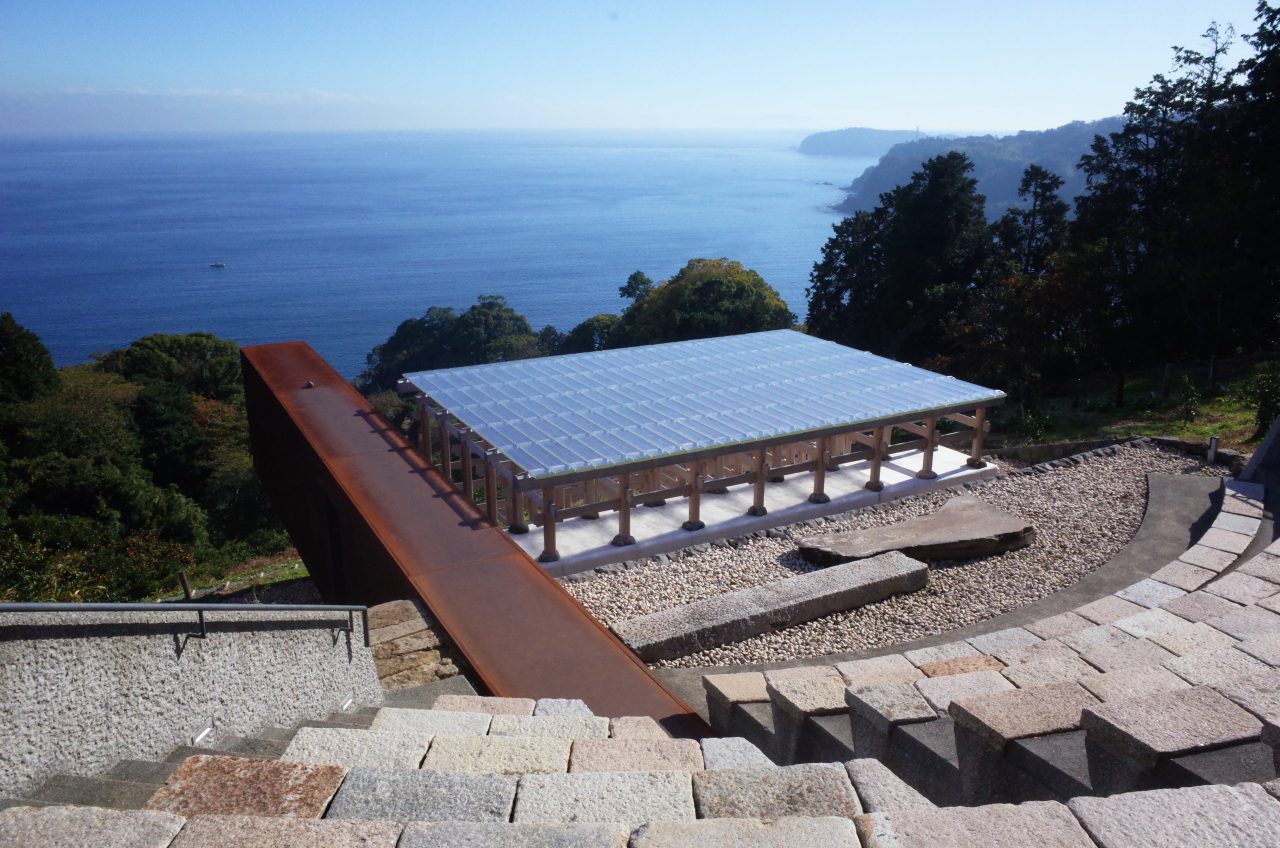

Now upon re-visiting Enoura Observatory recently, we find new additional artworks and spaces distributed over the sloping site since opening two years earlier. Following a bamboo grove, find Sugimoto’s new Fossil Cave, housing the extraordinary archive of his preserved fossil collection. Find museum-worthy and immaculately-preserved Jurassic-era Ammonites, to a Keichousaurus hui dating back 250 millions years ago to the Triassic era.


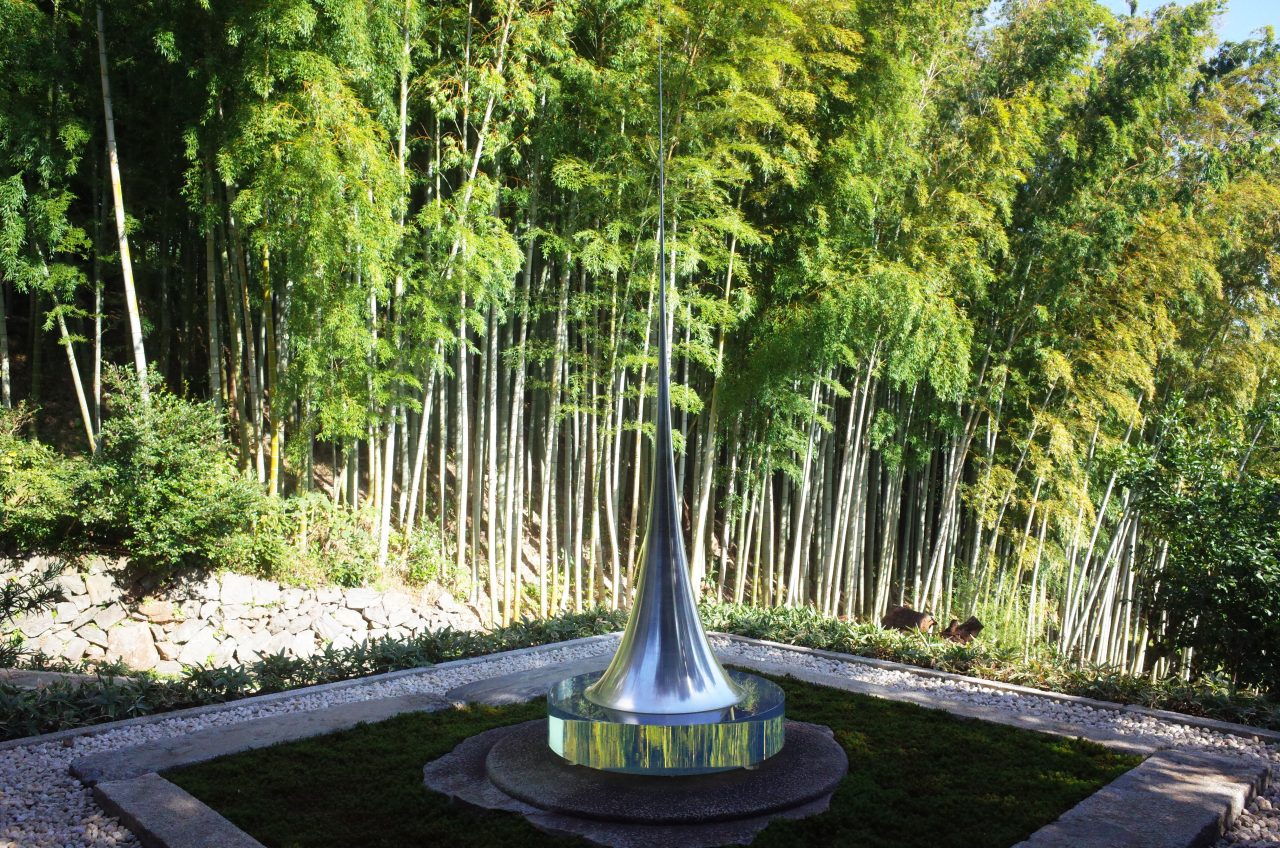
As quite the destination, Enoura Observatory can be reached via taxi or bus just 10 minutes from the local train station. Visitor numbers are kept to a maximum of 36 per two available time slots throughout the day, ensuring that each guest has three hours per visit and enough personal space and time to enjoy the full expanse of the site and artworks.
Due to the spectacular location, it’s hard not to feel an emotional connection to the design and the surrounding landscape, undoubtedly experiential in any season.

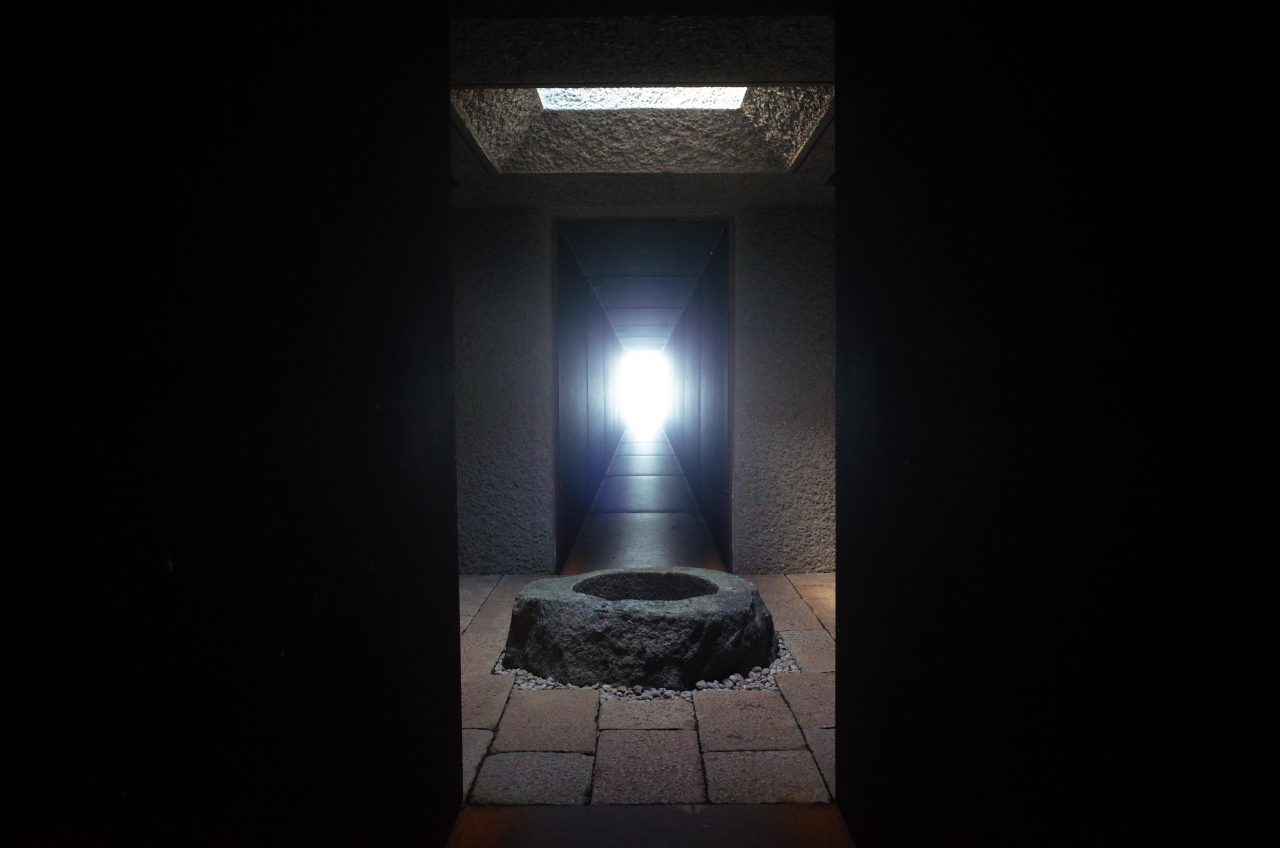
Enoura Observatory
Odawara Art Foundation
362-1 Enoura, Odawara,
Kanagawa, Japan
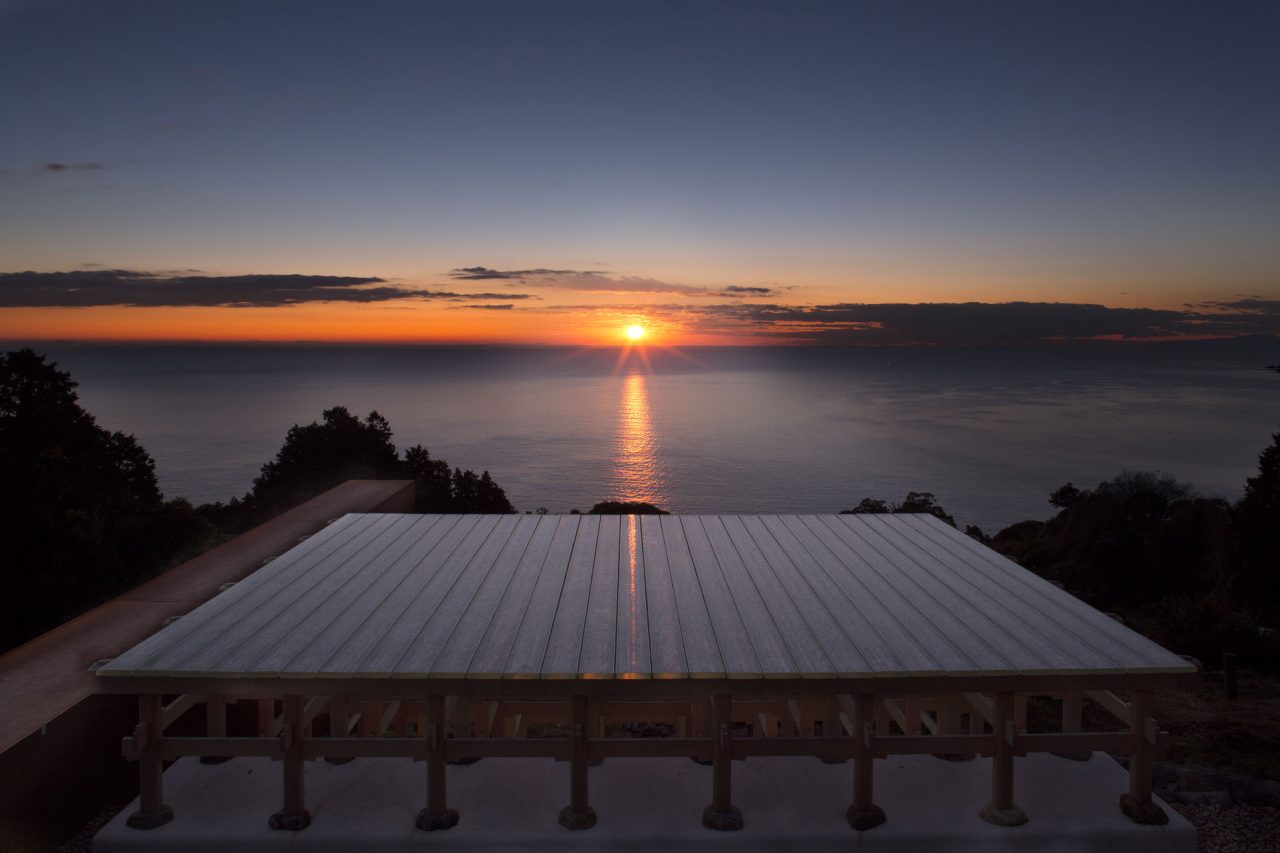
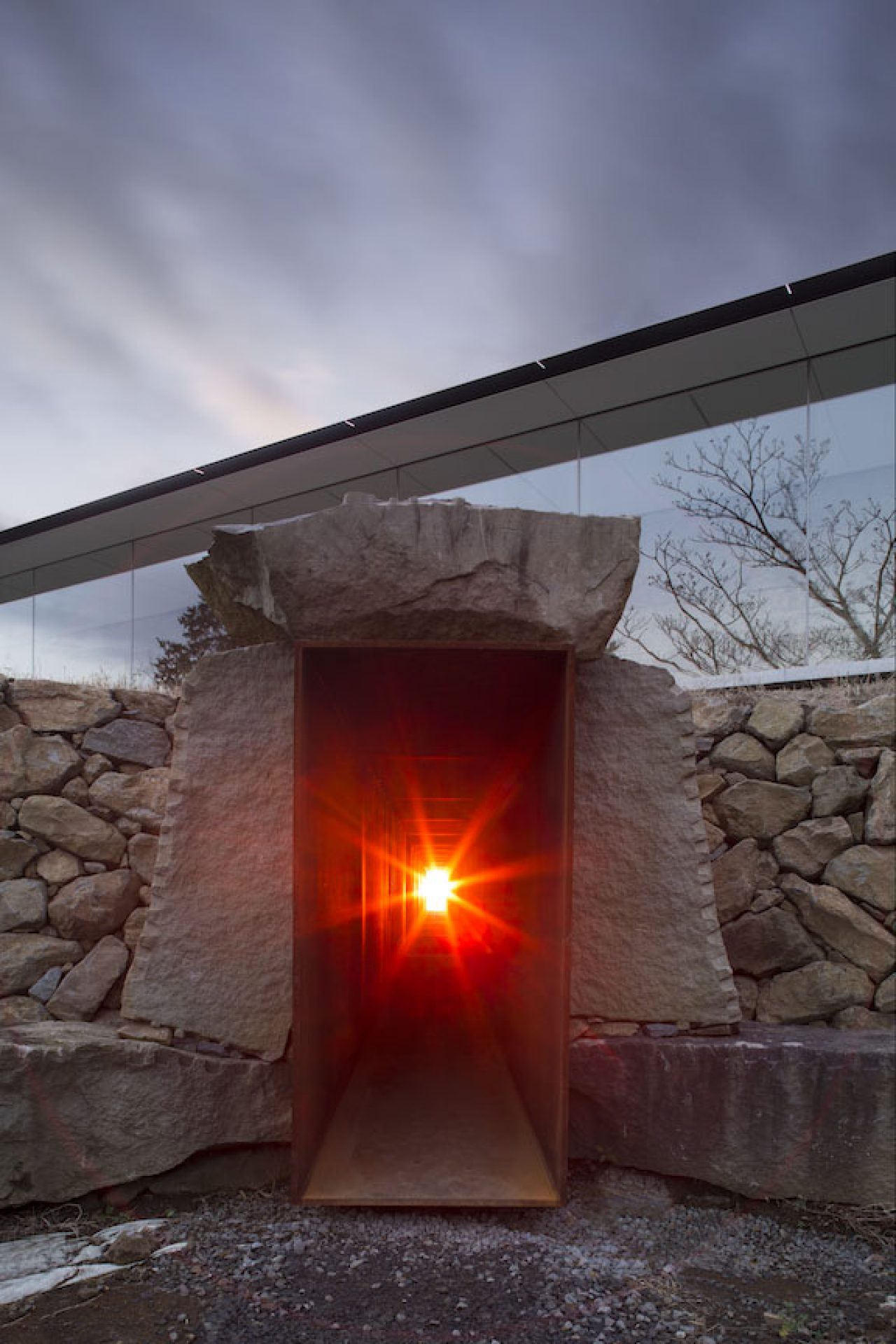
Words: Joanna Kawecki
Photography: Courtesy Odawara Art Foundation & Joanna Kawecki / Ricoh GR2
Originally published in December 2017 upon Enoura Observatory opening.
Revisited December 2019 for updated site artworks and venues.

































